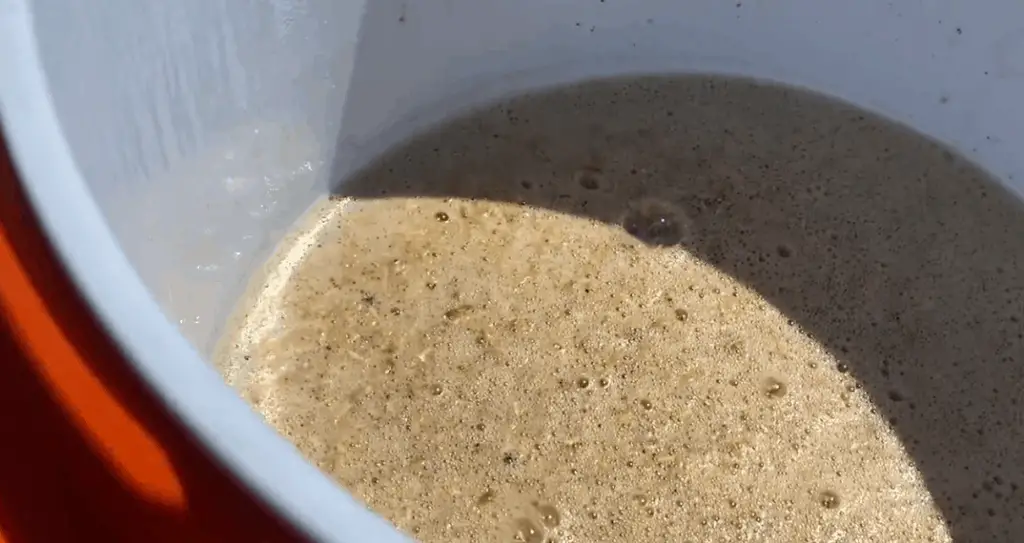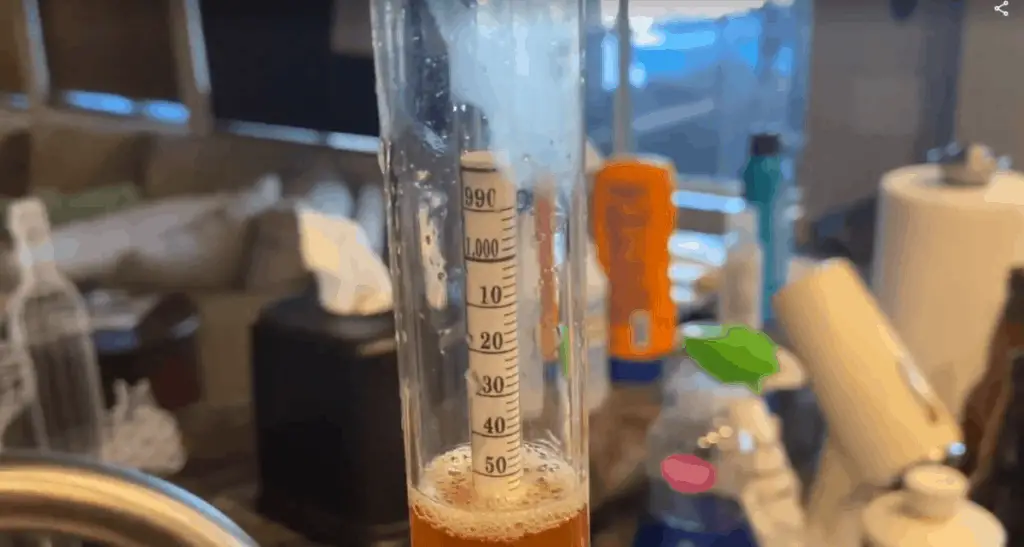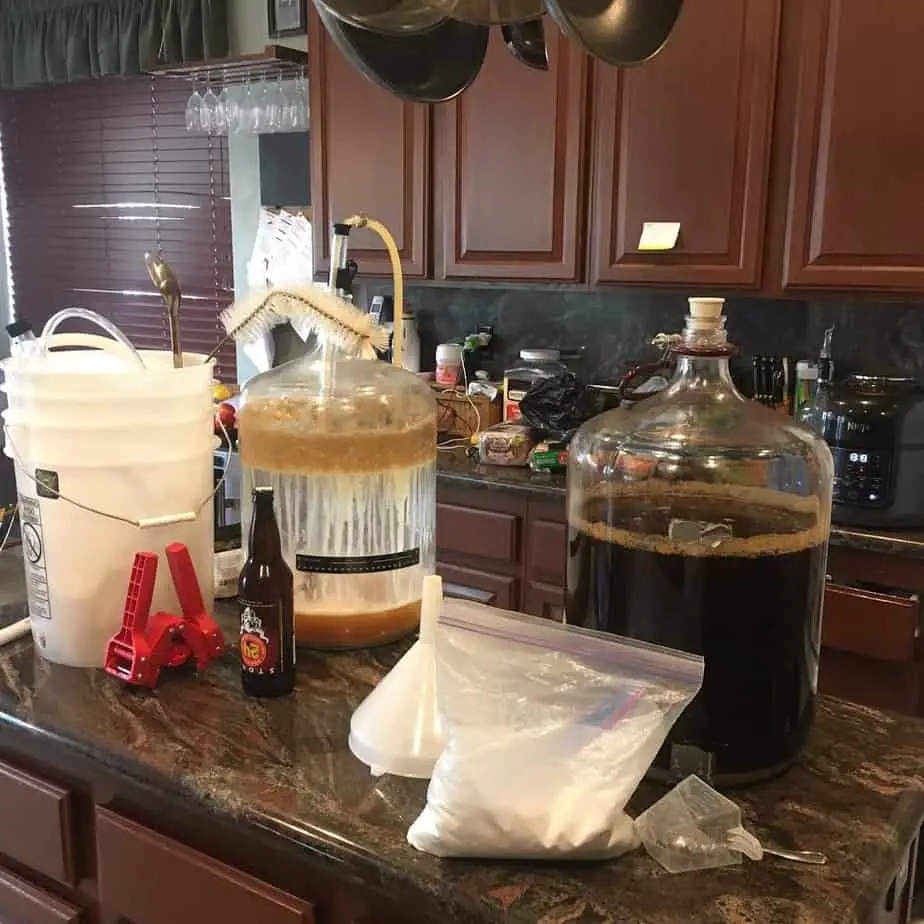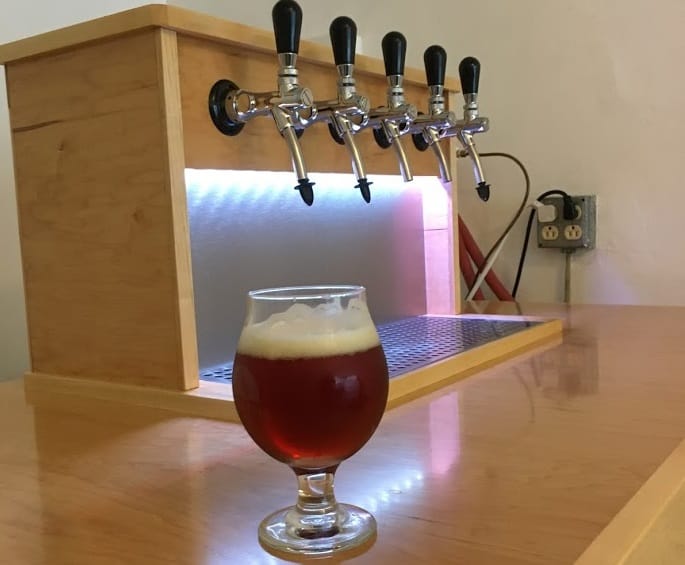Brewing your own beer at home can be a very enjoyable activity and can also lead to some interesting experiments. Homebrewing doesn’t need to be ridiculously expensive, but there is definitely a start-up cost involved.
The estimated cost of extract brewing, which requires the least amount of equipment, is $340. All-grain brewing, on the other hand, is about $780 as it needs more equipment. Partial mash brewing will be somewhere in the middle. The cost of brewing your own beer from scratch depends heavily on which brewing method you choose.
All calculations are based on 5 gallon batch brewing equipment. 1 gallon brewing equipment can be considerably cheaper.
There is a dizzying combination of products, methods, ingredients, and recipes out there, so let’s find out what the essentials are to start your first brew as well as the costs involved.
Quick Comparison of Start-Up Costs
The table below can be used to make a quick comparison between the different brewing methods and the equipment needed for each. It can also be helpful to tick off which items you already have and which you want to purchase.
Make sure You read below for specific information on the methods of brewing and their nuances.
| Equipment | Average cost | All-grain brewing | Partial mash | Extract brewing |
|---|---|---|---|---|
| 8-gallon pot/brewing kettle | $ 85 | Yes | Possibly | No |
| Mash tun (with valve and false bottom) | $ 250 | Yes | No | No |
| Hot liquor tank | $ 80 | Yes | No | No |
| 5-gallon pot | $ 65 | No | Yes | Yes |
| 6.5-gallon fermenting bucket | $ 25 | Yes | Yes | Yes |
| 6.5-gallon bottling bucket | $ 25 | Yes | Yes | Yes |
| High-temperature tubing | $ 11 | Yes | Yes | Yes |
| Steeping bag | $ 5 | No | Yes | Possibly |
| Propane burner | $ 70 | Yes | Possibly | No |
| Long spoon | $ 8 | Yes | Yes | Yes |
| Hydrometer | $ 20 | Yes | Yes | Yes |
| Thermometer | $ 20 | Yes | Yes | Yes |
| Wort cooler | $ 70 | Yes | Yes | Yes |
| Airlock | $ 5 | Yes | Yes | Yes |
| Siphoning and bottling equipment | $ 30 | Yes | Yes | Yes |
| Bottles | $ 25 | Yes | Yes | Yes |
| Caps | $ 7 | Yes | Yes | Yes |
| Bottle capper | $ 18 | Yes | Yes | Yes |
| Sanitizer | $ 25 | Yes | Yes | Yes |
| Malted grains | Recipe dependent | Yes | Yes | Possibly (specialty grains for specific recipes) |
| Malt extract | Recipe dependent | No | Yes | Yes |
| Hops | Recipe dependent | Yes | Yes | Yes |
| Yeast | Recipe dependent | Yes | Yes | Yes |
| Finishing agent | Recipe dependent | Yes | Yes | Yes |
The Beer Brewing Process
Beer brewing can be a complicated and scientific endeavor, but understanding the basics of the entire process can be beneficial.
How It’s Done
The first step is to prepare barley through malting and mashing. Malting allows the barley to germinate until the desired starch-to-enzyme ratio has been achieved (source). During mashing, the mix is heated in water to exact temperatures to create the sugar-filled liquid, wort, that will be fermented.

Once the brewer has extracted the wort through lautering and sparging, they boil it, and several chemical reactions occur. Most importantly, this is when they add the hops to essentially flavor the brew and prepare it for fermentation.
Fermentation, the process by which brewer’s yeast is added, can be done through warm, cool, and spontaneous fermentation. Different yeast strains work best for different methods. Warm fermentation will typically make ales, while cold fermentation will create lagers.
After fermentation, beer can be conditioned for several weeks, months, or years to allow it to age and develop to the brewer’s desired end product. It is then finally filtered and bottled.
Levels of Homebrewing
Some homebrewers can and do malt their own barley, grow their own hops, and cultivate their own yeast. However, you can purchase all of these items from the start.
The entire brewing process can be scaled down, and some steps can be eliminated depending on which brewing method you choose, all-grain, partial mash, or extract brewing.
The different methods come with different complexity levels, but after boiling the wort, all methods follow the same steps. With the right equipment and attention to detail, however, you will be able to brew great beer time and time again.
Image by Ashim D’Silva via Unsplash
All-Grain Brewing
This brewing method will take the longest, though all the steps up to fermentation should still be able to be completed in one day. In short, all-grain brewing includes all the brewing steps except for malting. It also requires the most equipment as well as larger pots (source).
Equipment Needed
- 8-gallon stainless steel stockpot (brew kettle)
- Hot liquor tank
- A mash tun (7- or 10-gallon cooler) with ball valve
- False bottom for the mash tun
- High-temperature tubing
- Heat source
- Long stainless steel spoon
- 6.5-gallon fermenter bucket with a lid
- 6.5-gallon bottling bucket with a lid and spigot
- Wort cooler
- Airlock
- Siphoning and bottling equipment
- Hydrometer
- Thermometer
- Clean bottles and caps
- Bottling capper
- Sanitizer
- Recipe
- Ingredients
For more information on taking the plunge to all-grain brewing check out my equipment guide for beginner brewers start here.
Pots and Buckets
A lot of water needs to be boiled and used during mashing, hence the large boiling equipment. While a brew kettle would be a good addition to your equipment, a large pot works just as well, and it’s cheaper.
A hot liquor tank is also needed if you want to make the mashing process easier. First-time brewers can forego this expense and only invest in one later as it is not a necessity to brew a successful batch of beer.
Your mash tun needs to have a ball valve attachment. A false bottom is also highly recommended but not necessary to drain your wort. These can all be bought together as a single unit.
After mashing and boiling the wort with hops and any other additives, it will need to be transferred to a fermenting bucket and sealed. When buying online, be sure to double-check the bucket is sold with its lid. Some brewers, first-timers or experts, might prefer the more expensive option of a carboy or conical fermenter.
For more information on fermentation vessels check here.
The second bucket, the bottling bucket, doesn’t have to come with a lid, but it needs a hole for a spigot at the bottom. This will allow you to fill the beer bottles.
Overall, unless you buy especially low- or high-end equipment, these items should come in at around $470, which would include the hot liquor tank that is not essential for an initial brewing set-up.
Bits and Bobs
If you are heating water in a large pot, an external heat source will be necessary. The pots will be too big for a typical home stove, and a propane burner is a general solution.
Pro Tip: You can start by small batching beer 1 gallon at a time and use a kitchen stove easily its also great for experimentation in the future.
You will need a long spoon and high-temperature tubing in the beginning to mix out the mash and transfer all the hot liquids between different vessels. You can buy the tubing in bulk and cut it as it corrodes over time.
A wort chiller will quickly cool down the liquid to prepare it for fermentation. Immersing the wort pot in an ice bath is also a way to cool down the liquid, but this is relatively inefficient.
An airlock needs to go on the fermentation bucket to allow air to escape during fermentation. If you have less head-space in your fermentation vessel a blow-off tube may be needed.
The siphoning and bottling equipment is basically just a siphon, clear pipe, and bottle filler that can be bought separately. Purchasing a kit is simpler than buying all the items separately and is roughly the same cost.
Measuring Gravity, Bottling and Sanitizing
A hydrometer is essential to measure the sugar content at different brewing stages and calculate the final product’s alcohol content. A reliable thermometer is also essential to ensure the liquid temperature during mashing and fermenting is correct.

You can save a couple of bucks when it comes to the bottles required, as you can recycle previously used beer bottles. Caps and a bottle capper round out the equipment for the last brewing step.
Sanitizer is absolutely crucial to beer brewing. Once the wort has been boiled with hops, the fermented beer can easily become infected. Sanitizing absolutely everything the beer comes into contact with is a must.
The cost of these bits and bobs can come in at an average of $310. The equipment for an all-grain brewing set-up would then amount to roughly $780.
Partial Mash Brewing
This brewing method is a combination of both all-grain and extract brewing. Rather than doing a full mashing of all your grains, you use fewer grains in a steeping bag as well as malt extract to make your wort.
Equipment needed
Less equipment is needed, as you will not be mashing completely. An 8-gallon pot, mash tun, hot liquor tank, and external heat source can all be scrapped from your list, while a steeping bag and strainer need to be added.

You can boil the wort liquid in a smaller pot and with the fermentation bucket filled up to the five-gallon mark. However, if you choose to do a full-wort boil partial mash, i.e., boiling all the wort liquid you plan to ferment rather than topping it up with water in the fermenting bucket, the larger pot and external heat source are still necessary.
The pots and buckets required for a partial mash should average to around $140 if you are also doing a full-wort boil. If not, it should be around $110. The bits and bobs, external heat source included, comes in at about $305, without it is about $235. The total average cost would be $345 to $445.
Extract Brewing
Extract brewing is definitely the easiest method for first-time brewers and requires no mashing on the brewers part. You can now buy all the sugars you would get from mashing in an extract form, either as a syrup or a powder.
Equipment Needed
Extract brewing requires the least amount of equipment as the large pots, mash tun, hot liquor tank, high-temperature tubing, and external heat source truly isn’t needed. Depending on the recipe you follow, you might steep some specialty grains that require a steeping bag, but this is not always the case.
The pots and buckets come in at an average of $110 and the bits and bobs at an average of $230. The total average cost of extract brewing equipment is $340.
Recipes and Ingredients
A plethora of beer recipes are available, and some can get very complicated (source). Brewing recipe kits, especially for extract brewing, are available where all the ingredients are provided.
Calculating the exact cost of ingredients depends on exactly what type of beer you want to make, as this would determine the amount and type of grain you would need to mash in an all-grain brew.
For a quick comparison, you can use a five-gallon pale ale recipe where the extract brewing method would require you to steep some of the grains. In total, the ingredient cost for the all-grain method could average at around $35.
The extract method equivalent would be around $45, as the malt extract is more expensive than the grains needed for mashing.
Final Thoughts
An initial beer brewing set-up doesn’t have to cost an exorbitant amount. Buying the basics at first and gradually upgrading and expanding your equipment is a good way to go.

Extract brewing is the easiest and cheapest method to start with and will allow you to get used to brewing before investing more money into upgrading to a partial mash or all-grain system. If you follow a good process you can even make excellent beer using the extract method.
